How to diagnose astigmatism. Astigmatism: Comprehensive Guide to Diagnosis and Treatment Options
How is astigmatism diagnosed. What are the main treatment options for astigmatism. Can astigmatism be cured completely. When should you seek medical attention for astigmatism symptoms.
Understanding Astigmatism: Causes and Symptoms
Astigmatism is a common refractive error that occurs when the cornea or lens of the eye has an irregular shape. This irregularity causes light to focus on multiple points on the retina instead of a single point, resulting in blurred or distorted vision. But what exactly causes this condition?
Astigmatism can be congenital (present at birth) or acquired later in life. Some potential causes include:
- Genetics
- Eye injuries
- Certain eye surgeries
- Keratoconus (a condition causing thinning of the cornea)
The symptoms of astigmatism can vary in severity but often include:
- Blurred or distorted vision at all distances
- Eyestrain or discomfort
- Headaches
- Squinting to try and focus
- Difficulty seeing clearly at night
Diagnostic Techniques for Astigmatism
Accurate diagnosis of astigmatism is crucial for effective treatment. Ophthalmologists and optometrists employ various methods to detect and measure the degree of astigmatism. What are these diagnostic techniques?

Visual Acuity Tests
Visual acuity tests are typically the first step in diagnosing astigmatism. These include:
- Distance vision test
- Near vision test
- Amsler grid test
In the distance and near vision tests, patients are asked to read letters on a chart. Inability to read the 20/20 line may indicate astigmatism or other refractive errors. The Amsler grid test helps detect any distortions in vision, which could be a sign of astigmatism or other eye conditions.
Refraction Test
A refraction test is a crucial part of diagnosing astigmatism. How is this test performed? The patient looks through a device called a phoropter while reading an eye chart. The optometrist adjusts the lenses in the phoropter to determine the best corrected visual acuity (BCVA). This test can detect astigmatism, as well as other refractive errors like myopia, hyperopia, and presbyopia.
Keratometry
Keratometry is a specialized test used to measure the curvature of the cornea. This test is particularly useful in diagnosing astigmatism as it can detect irregularities in the corneal shape. During keratometry, a light is focused on the cornea, and the reflection is measured to determine the corneal curvature.
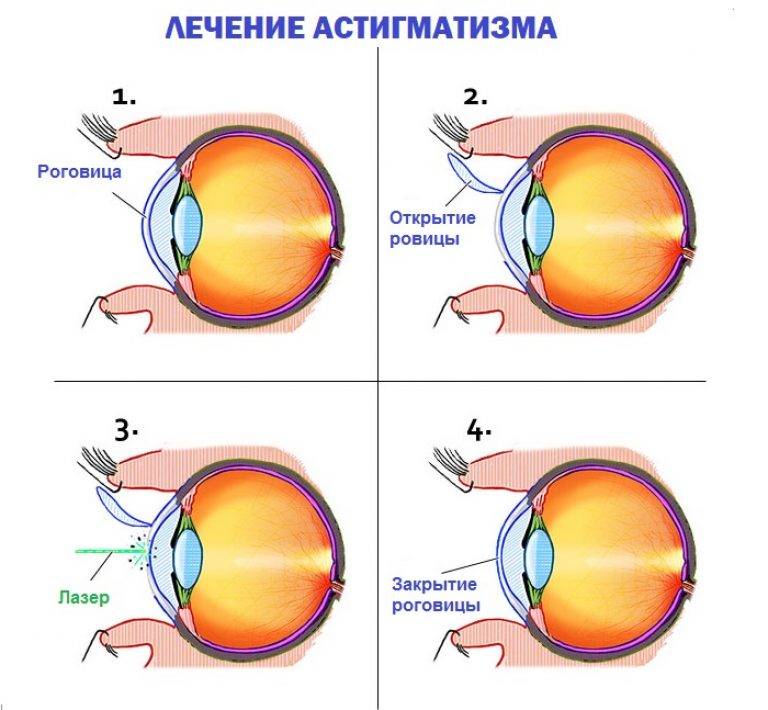
Corneal Topography
Corneal topography provides a detailed map of the cornea’s surface. This non-invasive imaging technique can reveal subtle irregularities in corneal shape that might not be detectable through other methods. It’s particularly useful for diagnosing irregular astigmatism and planning treatments like contact lens fitting or refractive surgery.
Astigmatic Fan Diagram Test
The astigmatic fan diagram test is a simple yet effective method for detecting astigmatism. In this test, patients view a diagram with lines radiating from a central point. If certain lines appear darker or sharper than others, it may indicate the presence of astigmatism.
Jackson Cross-Cylinder Test
While considered somewhat outdated by modern standards, the Jackson cross-cylinder test remains one of the most accurate tools for understanding refraction theories. This test is used to fine-tune the axis of astigmatism correction, ensuring the most precise prescription possible.
Treatment Options for Astigmatism
Once diagnosed, what are the available treatment options for astigmatism? The choice of treatment depends on the severity of the condition and the patient’s lifestyle needs. Let’s explore the main approaches:

Optical Therapy
Optical therapy is often the first line of treatment for astigmatism. This includes:
- Eyeglasses: The simplest and most common method of correcting astigmatism.
- Contact lenses: These can provide a wider field of vision and are often more comfortable for some users.
Both eyeglasses and contact lenses work by providing an additional refractive surface that helps focus light rays correctly onto the retina. While they can effectively manage symptoms, it’s important to note that they do not cure astigmatism.
Surgical Therapy
For those seeking a more permanent solution, surgical options are available. These include:
- LASIK (Laser-Assisted In Situ Keratomileusis): This popular refractive surgery reshapes the cornea to correct astigmatism and other refractive errors.
- Astigmatic Keratotomy: A procedure that involves making small incisions in the cornea to change its shape.
- Toric IOLs (Intraocular Lenses): These specialized lenses can be implanted during cataract surgery to correct astigmatism.
Is surgical correction right for everyone? While these procedures can significantly reduce or even eliminate astigmatism, they’re not suitable for all patients. Factors such as corneal thickness, overall eye health, and the degree of astigmatism all play a role in determining candidacy for surgical correction.

Managing Astigmatism in Daily Life
Living with astigmatism doesn’t have to be a constant struggle. What are some strategies for managing this condition in daily life?
- Regular eye exams: Astigmatism can change over time, so regular check-ups are crucial.
- Proper lighting: Ensure good lighting when reading or doing close-up work to reduce eye strain.
- Take breaks: Follow the 20-20-20 rule – every 20 minutes, look at something 20 feet away for 20 seconds.
- Maintain good posture: Poor posture can contribute to eye strain.
- Consider computer glasses: If you spend a lot of time on digital devices, specially designed computer glasses can help reduce eye fatigue.
Astigmatism in Children: Special Considerations
Astigmatism in children presents unique challenges. How does it affect young ones, and what should parents watch out for?
Children with astigmatism may not realize their vision is impaired, as they have no frame of reference for “normal” vision. Signs that a child might have astigmatism include:

- Squinting or tilting the head to see better
- Frequent eye rubbing
- Difficulty with reading or other close-up tasks
- Complaints of headaches or eye strain
Early detection and treatment of astigmatism in children is crucial. Untreated astigmatism can lead to amblyopia (lazy eye) or other vision problems that may persist into adulthood. Regular eye exams for children, starting from an early age, are essential for catching and correcting astigmatism and other vision issues.
Innovations in Astigmatism Treatment
The field of ophthalmology is constantly evolving, bringing new hope for those with astigmatism. What are some of the latest innovations in astigmatism treatment?
Wavefront-Guided LASIK
This advanced form of LASIK uses detailed measurements of how light travels through the eye to create a highly personalized treatment plan. It can correct even subtle visual distortions caused by astigmatism, potentially resulting in better visual outcomes than traditional LASIK.
Corneal Cross-Linking
While primarily used to treat keratoconus, corneal cross-linking is showing promise in managing certain types of astigmatism. This procedure strengthens the corneal tissue, potentially halting the progression of corneal shape changes that lead to astigmatism.

Advanced Contact Lens Designs
New developments in contact lens technology are providing better options for people with astigmatism. These include:
- Custom-designed toric lenses
- Hybrid lenses that combine the benefits of both soft and rigid gas permeable lenses
- Scleral lenses that vault over the cornea, providing a new refractive surface
When to Seek Medical Attention for Astigmatism
While mild astigmatism may not always require immediate attention, there are situations where seeking medical advice is crucial. When should you consult an eye care professional about astigmatism?
- If you’re experiencing persistent blurred or distorted vision
- If you’re having frequent headaches or eye strain
- If you notice a sudden change in your vision
- If you’re struggling with night vision or seeing halos around lights
- If your child is showing signs of vision problems, such as squinting or difficulty reading
Remember, regular eye exams are important even if you’re not experiencing symptoms. Many eye conditions, including astigmatism, can develop gradually and may not be noticeable in their early stages.
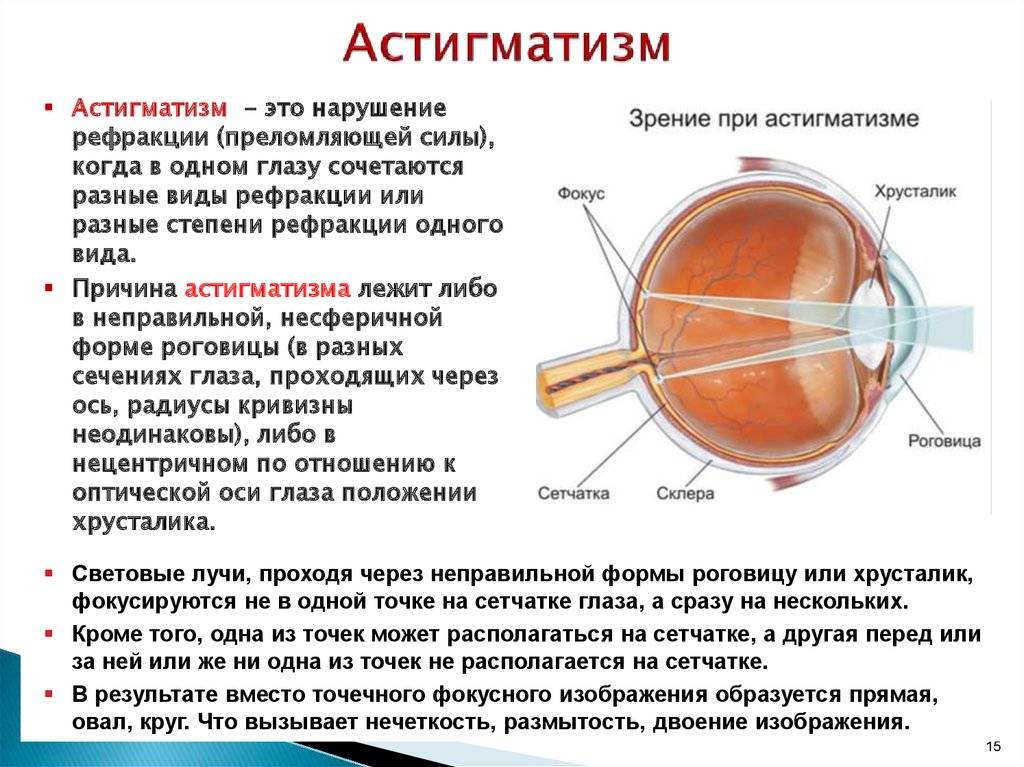
The Future of Astigmatism Research and Treatment
As our understanding of the eye and vision continues to grow, what does the future hold for astigmatism research and treatment?
Researchers are exploring several promising avenues:
- Gene therapy: Scientists are investigating the genetic factors that contribute to astigmatism, which could lead to new prevention and treatment strategies.
- Artificial intelligence in diagnosis: AI algorithms are being developed to analyze corneal topography images, potentially improving the accuracy and speed of astigmatism diagnosis.
- Bioengineered corneas: Research is ongoing into creating artificial corneas that could potentially replace damaged or irregularly shaped corneas, effectively treating severe astigmatism.
- Advanced imaging techniques: New imaging technologies are being developed to provide even more detailed views of the eye’s structure, allowing for more precise diagnosis and treatment planning.
These advancements offer hope for improved outcomes and quality of life for those living with astigmatism. As research progresses, we may see even more effective and personalized treatment options become available.

In conclusion, while astigmatism can significantly impact vision, modern diagnostic techniques and treatment options offer effective ways to manage this condition. From traditional corrective lenses to cutting-edge surgical procedures, there are solutions available for most cases of astigmatism. As research continues, we can look forward to even more advanced and precise methods of diagnosing and treating this common refractive error.
Astigmatism Diagnosis and Treatment
Skip to content
- Download PDF Copy
By Dr. Liji Thomas, MDReviewed by Dan Hutchins, M.Phil
Astigmatism is a type of refractive inaccuracy in which the shape of the normally curved surface of the cornea is curved to different degrees in different areas.
As a result of this abnormality, the light rays that enter the eye fails to converge at a focal point and instead comes to a focus at different focal points with a distance between them. This produces out-of-focus vision and the image formed on the retina is blurred.
A person with astigmatism may perceive a clear image at one angle while attempting to focus on another point.
Image Credit: SG SHOT / Shutterstock
This abnormality can either exist from birth or may develop as the child grows. Injuries or certain eye diseases can also cause astigmatism. Both children and adults may be affected by this.
Astigmatism. Eye vision disorder. Diagram of the eye. Image Credit: Slave SPB / Shutterstock
Diagnosis of Astigmatism
A complete eye examination is required to diagnose astigmatism. Different methods may be used, as follows:
- Visual Acuity: The three visual acuity tests are distance vision, near visions, and Amsler grid test. In the Amsler grid tests, all straight lines should be seen as unbroken with no distorted or omitted areas. In the distance and near vision tests, all letters should be read accurately on the line 20/20. In the distance vision test, the patient is not able to read the lines at 20/20. Astigmatism may be one of the causes.
- Refraction test: Patients are requested to look through a special refractor device called the phoropter and read the eye chart.
 The resulting measured vision level by this test is known as BCVA—“Best Corrected Visual Acuity.” Abnormal results can be caused by astigmatism, hyperopia, myopia, or presbyopia. When the patient response is inaccurate or unobtainable, optometrists choose to perform retinoscopy to measure the refraction levels.
The resulting measured vision level by this test is known as BCVA—“Best Corrected Visual Acuity.” Abnormal results can be caused by astigmatism, hyperopia, myopia, or presbyopia. When the patient response is inaccurate or unobtainable, optometrists choose to perform retinoscopy to measure the refraction levels. - Keratometry: Keratometry classifies dissimilar corneal curves by using two divided meridians. Irregular astigmatism results in distorted keratometry. A keratometer is used to measure the corneal curvature. A light is focused over the cornea and the reflection is measured—both angle and cylindrical power. This measurement helps to calculate the curvature surface area of the cornea so as to arrive at the right decision as to the proper contact lenses to be prescribed to correct astigmatism is taken.
- Corneal topography: Corneal topography is a vital tool in recognizing the shape and curve of the cornea.
- Astigmatic fan diagram test: In the fan diagram test the lines are drawn from a black center point.
 The fan lines are of the same width and darkness. When a patient sees the diagram and if some of the lines in the fan diagram appear specifically darker and appear sharper, it is likely that the patient may have astigmatism.
The fan lines are of the same width and darkness. When a patient sees the diagram and if some of the lines in the fan diagram appear specifically darker and appear sharper, it is likely that the patient may have astigmatism. - Jackson cross-cylinder test: This test is used to do the final corrections of the axis of astigmatism. With modern techniques, this test may be outdated but this is one of the most accurate tools to understand the theories of refraction.
Treatment of Astigmatism
Mild or restricted astigmatism does not require correction. The use of glasses and contact lenses may reduce but cannot cure astigmatism. With time, the condition may change and the requirement for new glasses or contact lenses may arise. Surgical correction is the only procedure that can almost eliminate or reduce astigmatism to a great extent.
The various treatment procedures available include:
- Optical Therapy: The simplest way to correct astigmatism is with eyeglasses.
 Contact lenses may also be used in place of eyeglasses. The artificial glasses act as the first refractive area where the light rays that will enter the eye can be focused to the appropriate extent to produce the best focus at the intraocular lens and results in accurate refraction. Contact lenses normally provide a better and broader field and quality of vision. It provides better comfort to many users too.
Contact lenses may also be used in place of eyeglasses. The artificial glasses act as the first refractive area where the light rays that will enter the eye can be focused to the appropriate extent to produce the best focus at the intraocular lens and results in accurate refraction. Contact lenses normally provide a better and broader field and quality of vision. It provides better comfort to many users too. - Surgical Therapy: When there is a need for significant correction to cure astigmatism, different surgical methods may be used such as:
- LASIK surgery: LASIK surgery is performed to flatten the steepest corneal meridian and to steepen the flattest meridian. It combines two technologies of refractive correction by using a microkeratome to create a slim tissue flap, and excimer laser ablation to restructure the stromal tissue below the flap.
- Astigmatic keratotomy: this refers to the use of surgical incisions on the cornea to produce carefully planned surgical scars that can correct astigmatism after LASIK.

- Phototherapeutic Keratotomy: PTK is the method in which the decomposition of epithelium cells is achieved using phototherapeutic techniques. Thin layers are removed microscopically, thus correcting the corneal irregularities.
- Laser thermal keratoplasty: Holmium YAG laser is used with a slit-lamp system is used to create spots in the perimeter of the peripheral cornea in this method.
- Conventional refractive surgery: Optical rectification surgeries use excimer laser photoablation to cure astigmatism. This alters the corneal shape and rectifies the error in refractive function of the cornea.
References
- https://www.healthdirect.gov.au/astigmatism
- https://www.aoa.org/patients-and-public/eye-and-vision-problems/glossary-of-eye-and-vision-conditions/astigmatism?sso=y
- https://medlineplus.gov/ency/article/003446.htm
- https://medlineplus.gov/ency/article/003844.
 htm
htm - http://hyperphysics.phy-astr.gsu.edu/hbase/vision/astigtest.html
- https://www.aapos.org/terms/conditions/95
- https://www.nhp.gov.in/disease/eye-ophthalmology-/astigmatism
- http://eyewiki.aao.org/Cross-cylinder_technique_for_subjective_refraction
- https://wwwn.cdc.gov/nchs/data/nhanes/2007-2008/manuals/manual_vi.pdf
- https://medlineplus.gov/ency/article/001015.htm
- https://www.ncbi.nlm.nih.gov/pubmedhealth/PMHT0023045/
- https://www.aoa.org/patients-and-public/caring-for-your-vision/corneal-modifications/refractive-surgery-and-corneal-modification-definitions?sso=y
- https://www.floridahealthfinder.gov/healthencyclopedia/Health%20Illustrated%20Encyclopedia/1/001015.aspx
Further Reading
- All Astigmatism Content
- Astigmatism – Common Eye Condition
- Astigmatism Types – Regular and Irregular
Last Updated: Dec 19, 2022
- Download PDF Copy
Please use one of the following formats to cite this article in your essay, paper or report:
APA
Thomas, Liji.
 (2022, December 19). Astigmatism Diagnosis and Treatment. News-Medical. Retrieved on June 21, 2023 from https://www.news-medical.net/health/Astigmatism-Diagnosis-and-Treatment.aspx.
(2022, December 19). Astigmatism Diagnosis and Treatment. News-Medical. Retrieved on June 21, 2023 from https://www.news-medical.net/health/Astigmatism-Diagnosis-and-Treatment.aspx.MLA
Thomas, Liji. “Astigmatism Diagnosis and Treatment”. News-Medical. 21 June 2023. <https://www.news-medical.net/health/Astigmatism-Diagnosis-and-Treatment.aspx>.
Chicago
Thomas, Liji. “Astigmatism Diagnosis and Treatment”. News-Medical. https://www.news-medical.net/health/Astigmatism-Diagnosis-and-Treatment.aspx. (accessed June 21, 2023).
Harvard
Thomas, Liji. 2022. Astigmatism Diagnosis and Treatment. News-Medical, viewed 21 June 2023, https://www.news-medical.net/health/Astigmatism-Diagnosis-and-Treatment.aspx.
Study reveals that wine consumption has an inverse relationship to cardiovascular mortality
Being “not up-to-date” on COVID-19 vaccination linked to lower risk of infection, study suggests
Daily multivitamin supplementation has a positive effect on key nutrition biomarkers in older men
Type 2 diabetes takes a toll on the brain altering microstructure
Study: Metabolic-associated fatty liver disease is increasing among U.
 S. adults
S. adults
The Fight Against Antimicrobial Resistance: A Promising Broad Host-Range CRISPR-Cas9 Delivery Tool for AMR Plasmid Removal
Dr David Sünderhauf
Study removes AMR plasmids using a mobile, broad-host-range CRISPR-Cas9 delivery tool.
Exploring the intersection of biology and proteomics
Balyn Zaro
In this new episode of omg OMx, Kate Sumpo talks to Balyn Zaro about her research, experiences, and insights as a biologist in proteomics and spectrometry.
Unlocking the Secrets of Multiple Sclerosis Progression: Brain-Immune Cell Communication
Dr. Cameron McAlpine
To commemorate World Multiple Sclerosis (MS) Day, we speak to Dr. Cameron McAlpine about his latest research that sought to understand better the proteins and signals that act as messengers between brain and immune cells in MS.
How Biotech Companies are Reshaping the Mental Health Landscape
What is Opsoclonus-Myoclonus Syndrome?
The Importance of Hormone Status in Breast Cancer: A Guide to Hormone Dependent Breast Cancer (HDBC)
Managing the Explosion of Healthcare Data to Harness its Power
From Pioneers to Innovators: Scotland’s journey to conquer liver disease
Newsletters you may be interested in
Astigmatism Testing – All About Vision
By Anna Barden; reviewed by Gary Heiting, OD
Astigmatism is a refractive error that causes blurred or distorted vision at all distances. Astigmatism is common among adults and children and can be corrected with eyeglasses, contact lenses, and refractive surgery (LASIK, for example).
Astigmatism is common among adults and children and can be corrected with eyeglasses, contact lenses, and refractive surgery (LASIK, for example).
But how do you know if you have astigmatism? Astigmatism testing is performed during a comprehensive eye exam at your eye doctor’s office. (Eager to assess your vision ahead of your appointment? See our downloadable astigmatism chart below).
Here’s what to expect from an astigmatism test:
What is an astigmatism test?
If you experience symptoms such as blurred or distorted vision, headaches and/or eye strain/discomfort, there’s a chance you could have some form of astigmatism.
During a routine exam, your eye doctor or an assistant will perform the following tests to check for astigmatism:
Refraction
As its name suggests, a refraction is a test to see if you have a refractive error (including astigmatism). There are two types of refraction in an eye exam: an automated refraction (a very quick test, usually performed by an assistant) and a manual refraction (performed by an assistant or by your eye doctor, usually after an automated refraction has been done).
During the manual refraction, you will look at an eye chart as pairs of lenses are placed in front of your eyes and you’re asked, “Which lens makes things clearer — lens 1 or lens 2?” (or something to that effect).
Visual acuity test
During your eye exam, your visual acuity (20/40, 20/20, etc.) will be tested with an eye chart. This measurement will be performed while you wear your current eyeglasses (or without corrective lenses if you don’t currently wear them) and then again after a manual refraction. Your visual acuity test is useful to determine the severity of your astigmatism or other refractive error.
Keratometry
In this astigmatism test, an instrument called a keratometer is used to measure the curvature of your cornea. In most cases, astigmatism is caused by unequal curves in different meridians of the cornea. (Think of your eyes like the face of a clock; straight lines that connect numbers on the opposite side of the clock — 12 and 6, 3 and 9, etc. — are the corneal meridians.)
— are the corneal meridians.)
Chart for at-home astigmatism test
If you’re eager to screen yourself for astigmatism at home, you can do so with a special eye chart. The way you see the lines on the chart below can indicate whether or not you have astigmatism.
Start by positioning yourself two to three feet away from your screen. If you already wear glasses, you can keep them on for this screening.
Cover your left eye first, while concentrating on the image with your right eye. Focus on the darkness and thickness of the lines in the image. Then cover your right eye while you concentrate on the image with your left. Again, take note of the darkness and thickness of the lines.
Do some lines appear bolder than others? If so, you could have astigmatism.
If you think you may have astigmatism based on this screening, be sure to follow up with an eye doctor, who can confirm the assessment and help you find adequate correction.
SEE RELATED: Additional astigmatism symptoms
Are online astigmatism tests accurate?
It’s important to note that an at-home astigmatism chart can suggest you have astigmatism, but it is not a replacement for a comprehensive exam administered by an eye doctor.
During an at-home astigmatism test, you position yourself two to three feet away from your screen, alternate covering your left and right eyes, and take note of the thickness of a given set of lines. This strategy can certainly help identity symptoms of astigmatism, as an initial approach.
If results from the at-home screening show signs of astigmatism, you should follow up with an eye care professional as soon as possible. Your eye doctor can determine exactly how much astigmatism you have and discuss the best treatment options with you.
After astigmatism testing
If you receive a diagnosis for astigmatism, your doctor may recommend one of many treatment options. The most efficient treatment will depend on each individual case, but the following are recommended most often:
The only way to receive these legitimate treatments is under the care of an eye doctor. Whether your online astigmatism test has prompted you or it’s simply time for your next routine eye exam, consulting an eye doctor will help you determine your next steps.
OVERDUE FOR AN EYE EXAM? Schedule an appointment today.
Page published on Friday, September 25, 2020
Diagnosis: astigmatism – Articles – Laser Surgery Center lasik.ru
Astigmatism is a common refractive error and occurs in both children and adults. It is associated with a violation of the normal refractive power of the cornea (less often – the lens), which leads to the absence of a single focus of the image on the retina. This causes a decrease in visual acuity. Surrounding objects appear blurry and fuzzy.
How the diagnosis is made
Refractive anomalies can only be diagnosed by ophthalmologists, with special equipment. The doctor checks visual acuity using a standard table. Examination of the patient is supplemented by refractometry. This is an automatic determination of the refractive power of the transparent media of the eye on a refractometer apparatus.
For diagnosis, skiascopy is also used, which is otherwise called the “shadow test”. This study using a transmitted beam of light and an ophthalmoscope allows you to determine the further point of clear vision.
This study using a transmitted beam of light and an ophthalmoscope allows you to determine the further point of clear vision.
Why early diagnosis is important
Astigmatism causes symptoms that reduce the patient’s quality of life. This is not only visual impairment, but also pain in the brow area, eye fatigue and other complaints that impair performance and prevent daily activities.
A high degree of the disease without appropriate correction can cause strabismus. Astigmatism is often combined with nearsightedness and farsightedness. If the presence of astigmatism was not taken into account when choosing glasses or contact lenses, vision may deteriorate further, asthenopic complaints progress.
What the patient needs to know
According to modern data, every second person on the planet suffers from this disease.
Physiological astigmatism is a condition that is associated with the natural asymmetry of the structures of the eyeball. It does not exceed ±0.75 D and does not cause inconvenience to the patient, does not progress with time.
It does not exceed ±0.75 D and does not cause inconvenience to the patient, does not progress with time.
The possibilities of modern ophthalmology make it possible to successfully correct the refractive power of the transparent media of the eye and restore excellent vision to the patient. If there are complaints about the deterioration of visual perception, blurring and fuzziness of the image, headaches, it is necessary to contact an ophthalmologist to establish a diagnosis and select a treatment.
Treatment at the Vision Protection Center
The I. Medvedev Ophthalmological Clinic has effective methods for diagnosing and treating various refractive errors.
Optical correction . The department of contact correction conducts a complete examination aimed at determining the type and degree of astigmatism. Based on the data obtained, the specialist establishes a diagnosis and helps to choose contact lenses or glasses.
Spectacle lenses for astigmatism have spherical and cylindrical components, which helps to achieve optimal refraction of rays at different refractive indices on the main meridians.
Contact lenses also have specific features. Their design minimizes rotation on the corneal surface, which optimizes the refractive power of the lenses.
Hardware treatment . These are techniques that are used in complex treatment and help relieve spasm of accommodation, improve blood circulation in the retina and other structures, and normalize metabolic processes in the tissues of the eye.
Surgical treatment . Corneal astigmatism is treated with laser vision correction. The LASIK method is based on the use of laser radiation, the direction and depth of which is determined using special diagnostic equipment.
The LASIK operation is performed under local anesthesia. The intervention is limited to the tissues of the cornea – this structure is devoid of blood vessels, so the operation is bloodless. No sutures are required.
I. Medvedev’s clinic provides a system of discounts for LASIK vision correction.
How to make an appointment
To check your eyesight and get individual recommendations for astigmatism at the I. Medvedev Eye Clinic, you can make an appointment by calling +7 (495) 727-00-44.
Astigmatism is – causes, symptoms, types, diagnosis and treatment
Astigmatism is a common disease due to a violation of the shape of the cornea or lens, preventing light rays from focusing normally on the retina, causing a blurry image. these structures of the eye normally have a regular spherical shape and a smooth surface. The refractive power of the cornea in the vertical and horizontal planes is the same. With astigmatism, the rays cannot focus at one point on the retina. If, against the background of a slight blurring of the majority of the rays, two mutually opposite rays stand out in black, a conclusion is made about the presence of astigmatism.
Enroll
Content of the article:
- Astigmatism – what is it?
- Causes
- Symptoms
- Combination with other eye pathologies
- Pathogenesis
- Astigmatism in children
- Classification and stages of development of astigmatism
- Possible complications 9 0070
- Diagnosis
- Treatment
- Prevention
Astigmatism – what is it?
Astigmatism is an eye disease characterized by distorted perception of images. Symptoms of astigmatism can include blurred vision, headaches, eye fatigue, and increased pressure in the eyes. For the diagnosis and treatment of astigmatism, it is necessary to contact the specialists of the ophthalmological clinic.
Symptoms of astigmatism can include blurred vision, headaches, eye fatigue, and increased pressure in the eyes. For the diagnosis and treatment of astigmatism, it is necessary to contact the specialists of the ophthalmological clinic.
On the website of our clinic, useful information is available about the causes of the disease, treatment features, services, programs and tests that are used in the diagnostic process. You can order a consultation or make an appointment by specifying your contacts.
To accurately determine the diagnosis, specialists perform a number of diagnostic tests, including computerized visometry, ultrasound and other methods. In the process of treatment, both hardware and conservative treatment can be used, including exercises for the eyes and the selection of optimal vision correction.
Each patient undergoes individual training and organization of treatment, including surgery, if necessary. The clinic has optimal diagnostics and modern methods of treatment, which allows to reduce the time of the course and restore vision in the shortest possible time.
It is important to understand that treatment often requires careful preparation and a certain regimen. After undergoing full preparation for treatment, the patient should follow the recommendations of the doctors and regularly engage in gymnastics for the eyes.
Prevention and evaluation of eye health, including children’s, can be done at any age. The clinic provides a choice of services and programs for children and adults, as well as useful reminders and a guide for everyone.
Causes
The eye as an optical system has three lenses:
- The cornea has the highest refractive power.
- Medium refractive lens.
- Vitreous inside the eye with the lowest refractive power.
In addition to corneal astigmatism, there is also lens astigmatism, in which the lens has an irregular shape. The shape of the human cornea is inherited. If a child has a pathology when it was not in the genus, then this is due to mutations during the development of the embryo, which are evolution. Thus, people are born with not perfectly even corneas. Most often, astigmatism affects both eyes. Acquired astigmatism occurs due to various damage to the lens or cornea and usually develops after injuries during life.
Thus, people are born with not perfectly even corneas. Most often, astigmatism affects both eyes. Acquired astigmatism occurs due to various damage to the lens or cornea and usually develops after injuries during life.
Symptoms
In the early stages, the manifestations of the disease worsen at night, due to the dilation of the pupil. Sometimes people with slight astigmatism see some of the letters on the 10th line of the table when checking visual acuity. Similar letters are often confused, for example, “P” and “B”, “H” and “K”, “O” and “C” without noticing the extra “stick”. “tail”
Vision problems may not appear from birth, since insufficient refraction – the refractive power of the eye with corneal astigmatism is compensated by the work of the ciliary muscle, which is associated with the lens capsule and can change the shape of the lens to focus near.
Combination with other eye pathologies
Most often, astigmatism complements farsightedness (hypermetropia), myopia (myopia), amblyopia, strabismus. Depending on which refractive error is combined with astigmatism, the types of this visual impairment are distinguished, for example, hyperopic or myopic is characterized by normal refraction in one meridian of the eyeball and myopia or hyperopia in the other.
Depending on which refractive error is combined with astigmatism, the types of this visual impairment are distinguished, for example, hyperopic or myopic is characterized by normal refraction in one meridian of the eyeball and myopia or hyperopia in the other.
Pathogenesis
According to studies, congenital astigmatism occurs in most children up to three months, which will decrease as they grow older, and at 18 months it reaches adult values. Therefore, a linear decrease in astigmatism and its presence in newborns is a natural way of eye development. In older people, some parts of the lens become opaque and irregular in shape, but in many cases there are no outward signs of visual impairment.
Astigmatism in children
In general, the shape of the cornea changes in children from 1 to 3 years. Problems appear at school age. The rest of the time, the disease is stable, if it is not associated with keratitis or keratoconus – thinning, stretching and clouding of the cornea.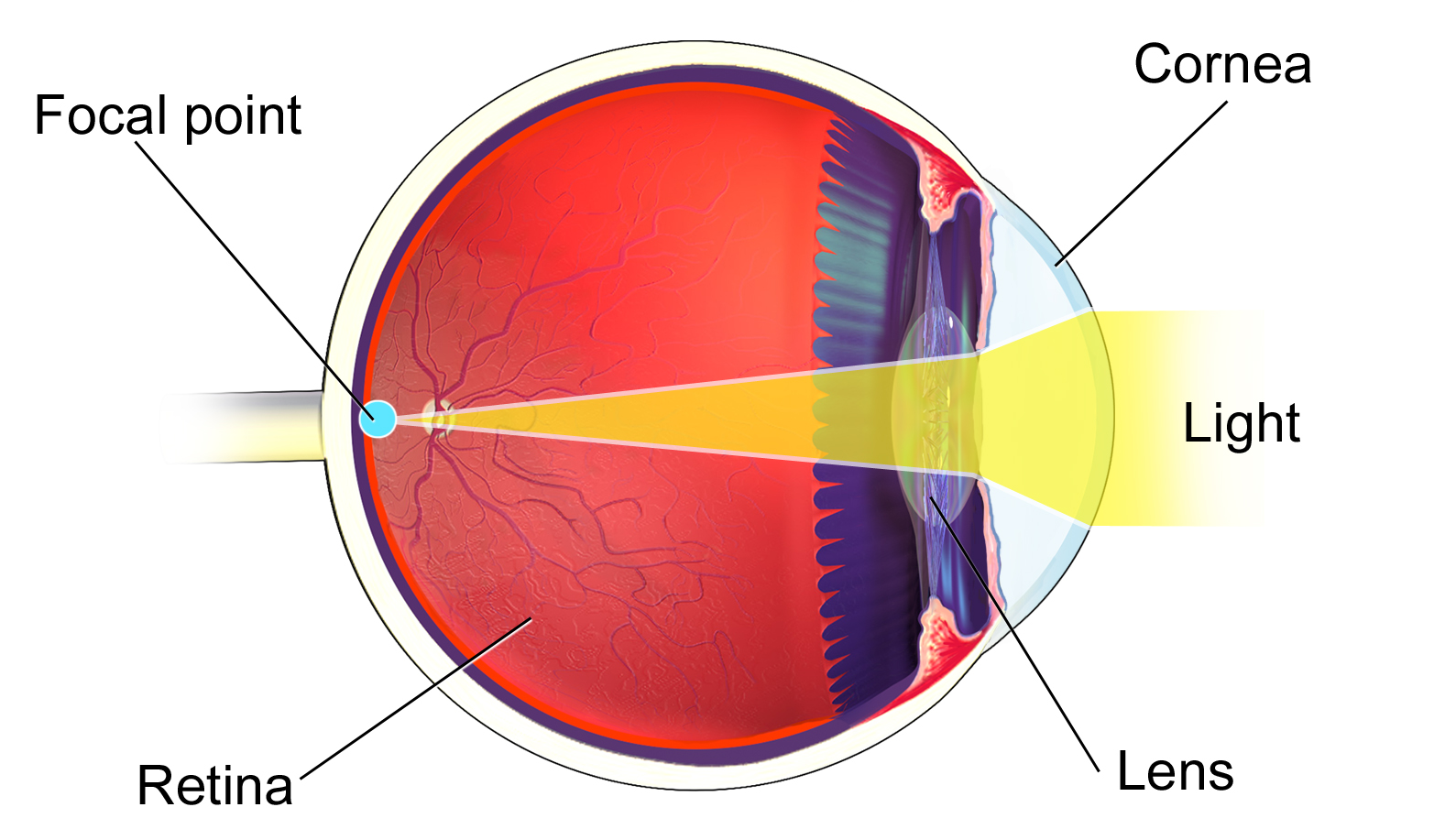 Lenticular astigmatism in children is associated with uneven tone of the ciliary muscle. It is imperative to undergo an examination by a pediatric ophthalmologist, as children adapt well to visual impairment. Osteopathic treatment in young children is aimed at correcting neurological deficits, such as intracranial venous hypertension, perinatal encephalopathy, dysarthria. Osteopathy is a system of manual treatment. Osteopaths treat progressive myopia. The mechanism of development of astigmatism from an osteopathic point of view:
Lenticular astigmatism in children is associated with uneven tone of the ciliary muscle. It is imperative to undergo an examination by a pediatric ophthalmologist, as children adapt well to visual impairment. Osteopathic treatment in young children is aimed at correcting neurological deficits, such as intracranial venous hypertension, perinatal encephalopathy, dysarthria. Osteopathy is a system of manual treatment. Osteopaths treat progressive myopia. The mechanism of development of astigmatism from an osteopathic point of view:
- With torsion of sphenobasilar synchondrosis (SBS), asymmetric tension appears at the level of the orbit and due to the uneven shape of the eye.
- Corneal deformity due to metabolic problems such as toxic effects: vascularization results in fluid inhibition and corneal reshaping.
Classification and stages of development
There are many types of astigmatism according to the degree and form of “unevenness” of the cornea.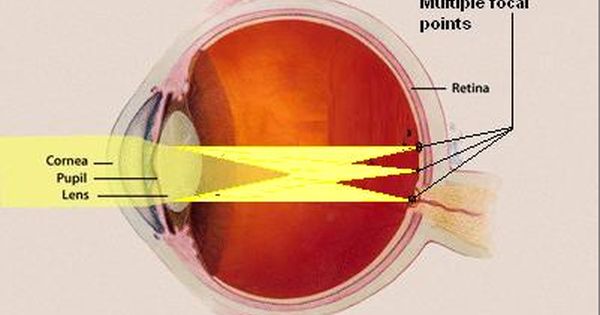
There are simple myopic, complex myopic, simple farsighted, complex farsighted and mixed types.
The most understandable and convenient is the classification according to the magnitude of the difference between the meridians in diopters.
- up to 3.0 diopters – weak degree;
- 3.0 to 6.0 diopters – medium;
- 6 or more – high degree.
Possible complications
There are few complications of the disease. Refractive pathology, just like nearsightedness and farsightedness, affects visual acuity. If astigmatism was not detected in a child in time, then amblyopia or “lazy eye” may develop. In pathology, due to incorrect focus, double vision in the gases, a fuzzy picture is transmitted by the optic nerve to the brain, so the child cannot see sharply. With age, the need to improve visual acuity grows, the level of visual analyzers does not change, due to astigmatism it becomes impossible to form a clear image on the retina. Therefore, it is important to identify and correctly correct astigmatism in time, due to which vision is reduced.
Therefore, it is important to identify and correctly correct astigmatism in time, due to which vision is reduced.
Diagnosis
Examination for suspected pathology is always complex. Modern equipment allows diagnosing astigmatism. For example, with the help of keratometry, the curvature of the cornea is measured, refractometry is a procedure for determining the refraction of the eye using a device to study the optical power of the meridians, the difference between them and the degree of the axes, in order to diagnose corneal astigmatism.
For diagnosis, keratotopographs are used – devices for accurate construction and 3D visualization of the anterior surface of the cornea.
It is important to examine the posterior surface of the cornea so as not to miss the first signs of chronic keratoconus, which thins, stretches and becomes cloudy.
Skiascopy – a method for determining the disease – is carried out with a skiascope device, consisting of a flat and concave mirror and skiascopic rulers with a set of lenses to select the best spherical lens for each of the eyes. The ophthalmologist directs a beam of light emanating from a 60-80 W matte light bulb installed behind the patient’s head on the left side with a flat mirror into the patient’s eye so that a spot of light appears on the pupil. When you turn the mirror in different directions in the vertical and horizontal direction, shadows appear. Refraction disorders (nearsightedness, farsightedness, astigmatism) depend on the movement of the shadow. The refraction value is measured with lenses in a skiascopic ruler. This method cannot determine the type of astigmatism (corneal or lens).
The ophthalmologist directs a beam of light emanating from a 60-80 W matte light bulb installed behind the patient’s head on the left side with a flat mirror into the patient’s eye so that a spot of light appears on the pupil. When you turn the mirror in different directions in the vertical and horizontal direction, shadows appear. Refraction disorders (nearsightedness, farsightedness, astigmatism) depend on the movement of the shadow. The refraction value is measured with lenses in a skiascopic ruler. This method cannot determine the type of astigmatism (corneal or lens).
The correct analysis of the obtained data by autorefractometers makes it possible to judge the compensated astigmatism in the patient.
Treatment
Astigmatism is a condition due to the irregular shape of the cornea, which can be changed by exposure to an excimer laser. Refractive surgery in some cases helps to completely get rid of the disease. To assess vision and effective treatment, you should sign up at the medical center. To improve the quality of vision, it is worth contacting an ophthalmologist. At an ophthalmological examination, the doctor will be able to recognize the symptoms of distortion of the focus of vision
To improve the quality of vision, it is worth contacting an ophthalmologist. At an ophthalmological examination, the doctor will be able to recognize the symptoms of distortion of the focus of vision
Three ways to correct vision:
- glasses with a cylindrical component.
- toric contact lenses.
- laser correction – performing operations to correct vision anomalies
- Glasses are the oldest method of vision correction, but for astigmatism they are not very comfortable in terms of tolerance because the lens of the glasses is usually at a distance of 12 mm from the cornea, looking around patients move eyes, translating, look not through the optical center. Wearing glasses often causes eyebrow discomfort and headaches. If the eyes get tired quickly, then the optics need to be replaced or the eyes should have more rest, especially when their fatigue and tension are felt.
 On the other hand, the correction with glasses has no limit in terms of the degree and magnitude of corrected astigmatism.
On the other hand, the correction with glasses has no limit in terms of the degree and magnitude of corrected astigmatism. - Contact lenses are the most comfortable method of correction, the space is not distorted against the background of distortion – distance of space and protrusion, as in glasses with high diopters. The patient looks through their center even looking around as they lie on the cornea. But soft lenses have a limit of 2.75 diopters. Therefore, they are suitable for low degree astigmatism. Moderate and severe degrees are treated with spectacle or laser correction. There are other types of lenses: orthokeratological and rigid gas permeable lenses.
- Excimer laser correction of astigmatism is a way to combat the shape of the cornea in astigmatism. A special device makes a topogram of the cornea in order to mark the exact shape, the doctor enters into refractive deviations: myopia, hyperopia of the patient. The system calculates ametropia – refractive error to make the necessary shape of the cornea through ablation, evaporating the cells.

Indications for surgery
- Laser correction is performed to improve visual acuity through surgery.
- Laser correction corrects the “crooked cornea”, in addition to the high cost, the method also has contraindications.
Contraindications
- acute and chronic diseases of the cornea;
- mental illness;
- keratoconus;
- under 18 years of age;
- thin cornea.
Prevention
Prevention begins in early childhood. It is important to monitor the health of the eyes and prevent increased stress on the visual organs. Adults are advised to carry out minimal physical activity for the eyes and not to abuse reading in poor lighting conditions.
It is very important to know that the disease can be caused by various reasons: from heredity to incorrect position of the eyes.

 The resulting measured vision level by this test is known as BCVA—“Best Corrected Visual Acuity.” Abnormal results can be caused by astigmatism, hyperopia, myopia, or presbyopia. When the patient response is inaccurate or unobtainable, optometrists choose to perform retinoscopy to measure the refraction levels.
The resulting measured vision level by this test is known as BCVA—“Best Corrected Visual Acuity.” Abnormal results can be caused by astigmatism, hyperopia, myopia, or presbyopia. When the patient response is inaccurate or unobtainable, optometrists choose to perform retinoscopy to measure the refraction levels. The fan lines are of the same width and darkness. When a patient sees the diagram and if some of the lines in the fan diagram appear specifically darker and appear sharper, it is likely that the patient may have astigmatism.
The fan lines are of the same width and darkness. When a patient sees the diagram and if some of the lines in the fan diagram appear specifically darker and appear sharper, it is likely that the patient may have astigmatism.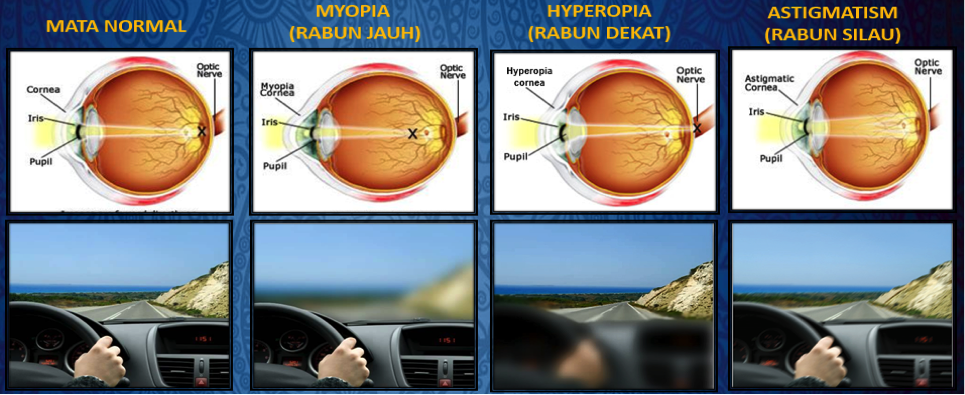 Contact lenses may also be used in place of eyeglasses. The artificial glasses act as the first refractive area where the light rays that will enter the eye can be focused to the appropriate extent to produce the best focus at the intraocular lens and results in accurate refraction. Contact lenses normally provide a better and broader field and quality of vision. It provides better comfort to many users too.
Contact lenses may also be used in place of eyeglasses. The artificial glasses act as the first refractive area where the light rays that will enter the eye can be focused to the appropriate extent to produce the best focus at the intraocular lens and results in accurate refraction. Contact lenses normally provide a better and broader field and quality of vision. It provides better comfort to many users too.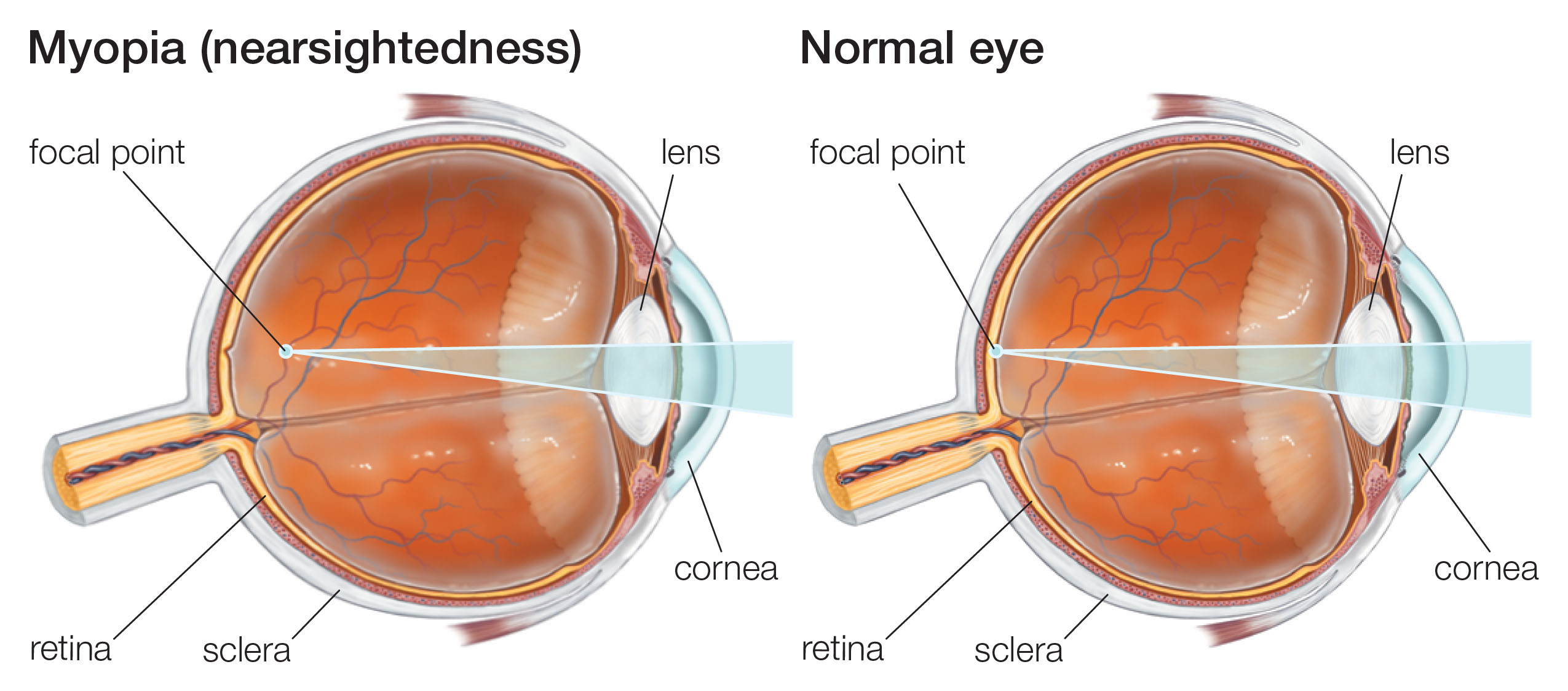
 htm
htm (2022, December 19). Astigmatism Diagnosis and Treatment. News-Medical. Retrieved on June 21, 2023 from https://www.news-medical.net/health/Astigmatism-Diagnosis-and-Treatment.aspx.
(2022, December 19). Astigmatism Diagnosis and Treatment. News-Medical. Retrieved on June 21, 2023 from https://www.news-medical.net/health/Astigmatism-Diagnosis-and-Treatment.aspx. S. adults
S. adults On the other hand, the correction with glasses has no limit in terms of the degree and magnitude of corrected astigmatism.
On the other hand, the correction with glasses has no limit in terms of the degree and magnitude of corrected astigmatism.